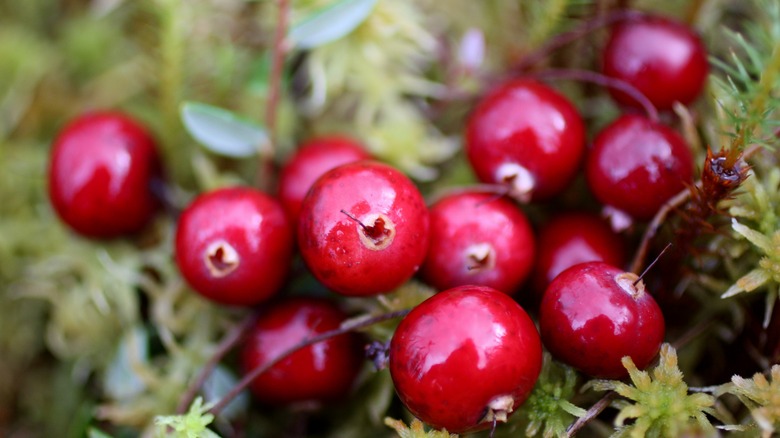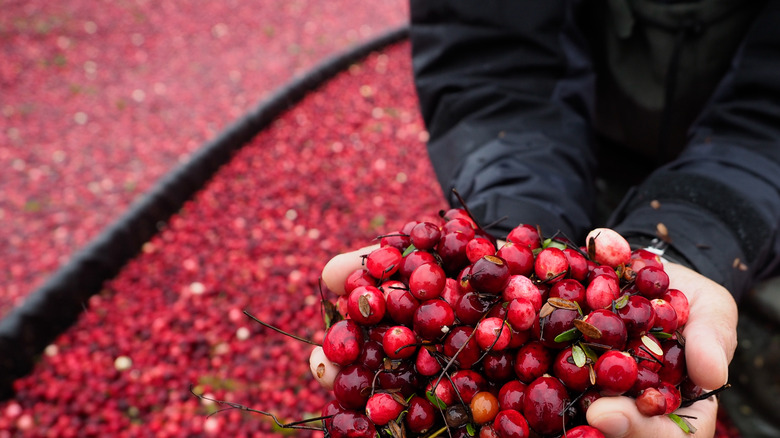The US Almost Lost Cranberries Forever During A Historic Health Scare
1959 was hardly a dull year. Alaska and Hawaii became the 49th and 50th states, Mattel released the first Barbie, and Fidel Castro took power in Cuba. There was another historic event that occurred in late 1959 that almost caused a beloved American crop to be lost forever. It's known as the Great Cranberry Scare of 1959.
In early November, just before Thanksgiving, President Eisenhower's Secretary of Health, Education, and Welfare, Arthur S. Flemming, revealed the fact that a very small percentage of a cranberry crop from the Northwest had tested positive for an herbicide called aminotriazole. This particular herbicide was known to cause cancerous tumor growth in lab rats. The department advised against the purchase of cranberries whose origins were unknown to the consumer. As a result, cranberry sales dropped by an astonishing 63% at the very time of year when they should have been rising.
Cranberry farmers were not pleased. Their entire industry had been decimated, prompting the government to provide them with several million dollars of relief due to the damage caused. And though Ocean Spray made it clear to everyone who would listen that cartloads of aminotriazole-contaminated cranberries would need to be consumed in order for them to have any adverse effect on humans, the damage was already done. America was in the throes of its first dietary panic.
A precursor of things to come
Do you remember all the E.coli scares in everything from Taco Bell to ground beef? What about the 1977 botulism scare where several cases in Michigan were caused by poorly home-canned jalapeño peppers? While Americans have been concerned about the quality of the food they consume since Upton Sinclair published The Jungle in 1906, the Great Cranberry Scare of 1959 is considered the first of the modern dietary scares that have plagued the United States for over 60 years.
The legislation that allowed inspectors to examine barrel after barrel of Ocean Spray cranberries was the Delaney Clause of the Food Additives Amendment of 1958. The clause, named for a Democratic representative from Queens, stated that no food additives should be deemed safe if they were carcinogens. As the aminotriazole used was found to produce tumors in lab rats, its presence, however small, in the cranberries meant that the batch was contaminated and therefore illegal to sell.
By Christmas, Secretary Flemming came to an agreement with the cranberry industry and allowed for all seized product that had been determined to be free from the herbicide to be put back on shelves for sale. And though the brief period between Thanksgiving and Christmas of 1959 almost cost the U.S. its cranberry industry, sales began to climb again in the fall of 1960 and we haven't had a cranberry scare since.

